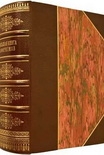The Main Enemy Milton Bearden (read full novel .txt) 📖

- Author: Milton Bearden
Book online «The Main Enemy Milton Bearden (read full novel .txt) 📖». Author Milton Bearden
By early 1981, Tolkachev had bought his little Zhiguli, and he and Rolph began to hold their meetings inside the car, parked on the street. Rolph worried endlessly about the security of these car meetings. In winter, the Zhiguli’s windows would steam up while they talked; Rolph worried that a local militiaman would pound on the door and wonder why two men—rather than a man and a woman locked in a passionate embrace—were inside.
Rolph was soon struck by Tolkachev’s fatalistic attitude toward his work as an American spy. He seemed resigned to the fact that he would eventually be arrested and appeared driven to steal as many secrets as possible before the inevitable end. Rolph was handling the case when Tolkachev began demanding a suicide pill. When his request was initially rebuffed, Tolkachev started handing notes to Rolph to deliver straight to the CIA Director and the President. He wanted them to know that it was his personal wish to receive such a pill and was not an idea forced on him by Rolph or anyone else. Finally, after nine months of begging, Rolph gave him one cyanide capsule. Once he bit down on the capsule, Rolph instructed Tolkachev, death would come in three to five seconds.
Tolkachev was always eager to find new ways to increase the number of documents he could copy for the CIA. Early on in his espionage career, he found that he could check classified materials out of the library at his design bureau and take them home at lunch to photograph before handing them back in. But then the library began tightening up its security procedures and eventually required that an employee leave a security badge—a propusk, in Russian—before checking out materials. All employees had to show their ID cards to enter or leave the building, so the new regulation meant that Tolkachev could no longer take documents home to photograph.
Tolkachev told Rolph that if the CIA could forge a propusk for him, he could leave his original ID card with the library when checking out classified materials and flash his fake one to go in and out of the facility. Tolkachev gave photographs of his propusk to the CIA, which finally fabricated a copy after months of trying to match its exact colors and design.
By late 1982, Tolkachev had produced so much and was calling for meetings with the CIA so frequently that the agency decided to tell him to slow down. He was taking too many risks.
There was no sign of trouble at the regularly scheduled meeting in April 1983, but soon after that, Tolkachev panicked and broke off contact for several months. He’d heard that an investigation was under way at his institute. The word in the office was that some sensitive information had apparently leaked from the design bureau, and security officials were launching a probe. For a time, Tolkachev became so convinced that the KGB was closing in on him that he would go to work with his cyanide pill tucked carefully in his mouth. He even went into a meeting with his supervisor with the “L-pill” between his teeth, in case his boss was about to denounce him as a spy. A little pressure on the capsule, a few deep breaths, and he would escape. But after ten minutes of innocuous talk about a technical matter, the meeting ended, and Tolkachev returned to his cubicle, cyanide pill still in his mouth, hands clammy, adrenaline coursing through his system.
Tolkachev took everything linking him with the CIA to his dacha, itself bought with CIA money, and burned it in his wood stove—communications plans, intelligence collection requirements, everything, including a bag of cash. He watched over 200,000 rubles go up in smoke.
But in the end, Tolkachev’s craving for excitement won out. After skipping three meetings with the CIA (his case officers had to abort two attempts to meet him during the same period), Tolkachev reestablished contact in November 1983. He told the CIA about the security probe at his institute, but by then he was confident that the investigation was over.
Once again Tolkachev began photographing secret documents. This time, his production was reduced—he had already copied most of the key documents related to his field of expertise. Now he was mostly providing updated information to supplement material he had given the Americans in previous years. The CIA held only two meetings with Tolkachev in 1984; the case had peaked.
Tolkachev’s last meeting with the CIA came in January 1985, when two anomalies occurred that would later raise questions at Langley. He opened a different fortochka in his apartment from the one he had used in the past to signal for meetings. And when he handed over his film at the meeting, it turned out to be out of focus. The CIA knew that the KGB sometimes had agents it had brought under control hand over out-of-focus photography of top-secret documents, in order to convince the Americans that their agent was still safe and working without actually revealing any sensitive information. During their brief January meeting, Tolkachev warned his new case officer that he was worried about the film. He said he’d photographed the documents in a darkened bathroom at the design bureau but wasn’t sure the pictures would come out.
Still, when Tolkachev failed to show up for a scheduled





Comments (0)